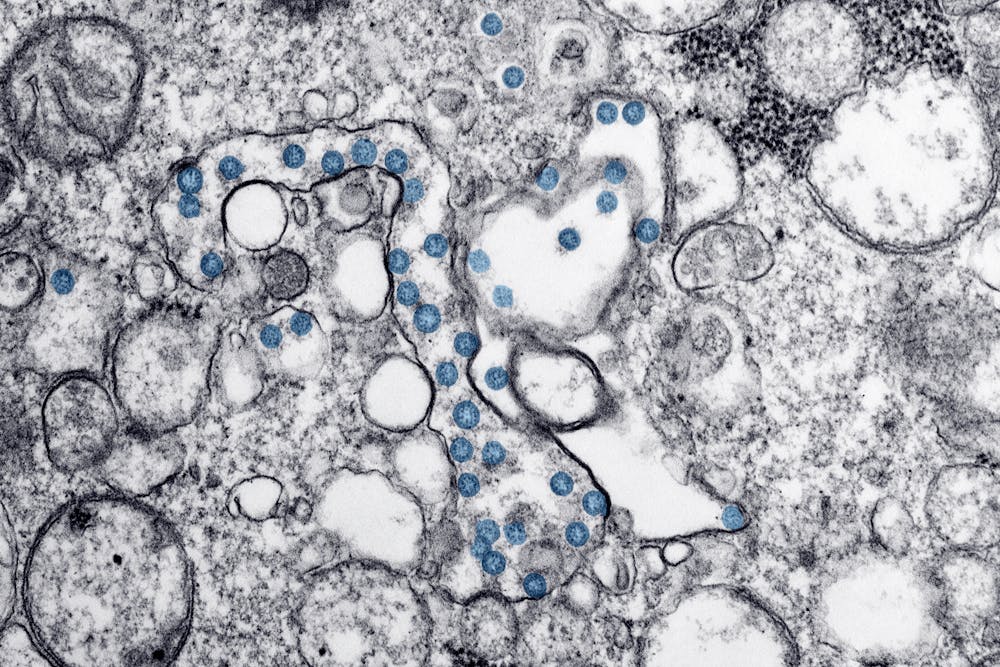New Virus Discovered in Alabama Raises Pandemic Fears
Last updated on
Camp Hill Virus and Its Connection to Other Deadly Henipaviruses
Camp Hill virus belongs to the henipavirus family, known for deadly infections in animals and humans. Scientists have not yet identified human cases, but similar viruses have caused severe outbreaks. Nipah virus, one of the closest known relatives, spreads from bats to humans and can trigger brain inflammation, respiratory distress, and death. Past South and Southeast Asia outbreaks have resulted in strict quarantines due to its high fatality rate. Langya virus, another henipavirus, crossed from shrews to humans in China. Infected individuals experienced fever, fatigue, muscle pain, and organ damage. Though no deaths have been recorded from Langya, its emergence raised concerns about how easily viruses in this family can jump between species.Expert Warnings About Potential Animal-to-Human Transmission

Background and Dangers of Henipaviruses
Henipaviruses have a history of causing deadly outbreaks. Authors Hongzhao, Ji-Young, and Bradley stated that “Hendra virus (HeV) and Nipah virus (NiV) are biosafety level 4 zoonotic pathogens causing severe and often fatal neurological and respiratory disease. These agents have been recognized by the World Health Organization as top priority pathogens expected to result in severe future outbreaks. HeV has caused sporadic infections in horses and a small number of human cases in Australia since 1994. The NiV Malaysia genotype (NiV-M) was responsible for the 1998–1999 epizootic outbreak in pigs with spillover to humans in Malaysia and Singapore. Since 2001, the NiV Bangladesh genotype (NiV-B) has been the predominant strain leading to outbreaks almost every year in Bangladesh and India, with hundreds of infections in humans. The natural reservoir hosts of HeV and NiV are fruit bats, which carry the viruses without clinical manifestation. The transmission pathways of henipaviruses from bats to humans remain poorly understood. ” Dr Parry said, ‘Henipaviruses have caused serious disease and death in people and animals in other regions.” The Hendra virus, first detected in Australia, has a fatality rate of 70 percent. Dr Parry further added and said, “Another example is Nipah virus, which has recorded fatality rates between 40 and 75 percent in outbreaks in Southeast Asia, including in Malaysia and Bangladesh.” The Nipah virus, another member of the henipavirus family, spreads from bats to humans and can trigger brain inflammation, respiratory failure, and organ damage. Severe symptoms, including brain and spinal cord inflammation, seizures, confusion, and coma., make these viruses highly dangerous within as little as 24 hours. No approved antiviral treatments exist, leaving doctors with limited options. Prevention depends on early detection, monitoring animal reservoirs, and reducing human exposure to infected wildlife.Shrews as a Potential Reservoir for the Virus

Scientists Investigate How Camp Hill Virus Infects Cells
Scientists are examining how the Camp Hill virus infects host cells. Like other henipaviruses, it likely relies on two key proteins: the G protein and the F protein. The G protein helps the virus attach to host cells, while the F protein facilitates the fusion of the virus with the cell membrane, allowing the virus to enter and begin multiplying. By studying this process, researchers aim to find ways to block the virus from infecting cells, a critical step in developing treatments and vaccines. Dr. Ariel Isaacs, a co-author of the study, said, “The research team focused on developing vaccines for this family of viruses.” Henipaviruses, including Nipah and Hendra, infect cells by binding to specific proteins on the host cell’s surface. The G protein latches onto cell receptors, while the F protein enables the virus to merge its membrane with the host cell. This fusion process allows the virus to enter the cell and replicate.Global Collaboration in Virus Research and Prevention

Public Reactions to Henipaviruses and Vaccines on X
The discovery of Camp Hill virus has sparked various reactions on social media, particularly regarding vaccine development and public health measures. Some users expressed skepticism about emerging viruses and potential vaccine development.Vaccine Development and Further Research
Dr. Ariel Isaacs said, “The next step in this research is to study the important surface proteins on the virus that play a role in entering cells in order to deepen our understanding of this virus family and find better ways to protect against it.” While the Camp Hill virus has not yet been detected in humans, its presence in the U.S. has raised serious concerns among public health experts. Ongoing surveillance and further research will be key to determining whether this virus could pose a significant threat in the futureSome of the links I post on this site are affiliate links. If you go through them to make a purchase, I will earn a small commission (at no additional cost to you). However, note that I’m recommending these products because of their quality and that I have good experience using them, not because of the commission to be made.




























 JOIN OVER
JOIN OVER
Comments